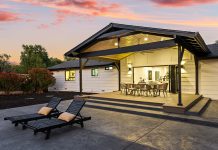Near as I can figure, Arline and I arrived in Scranton, Pennsylvania, about seven years after Joe Biden, at age 10, moved to Delaware with his family. We had been married in Pasadena, California, exactly one week before, and had driven from the wedding reception to Scranton in six days. Happy honeymoon, dear.
We arrived on a beautiful Saturday afternoon in mid-September 1959, the leaves of the great maple, birch and poplar trees just starting to turn yellow, amber, and red. We moved our meager belongings into an upstairs apartment in a house much like the Biden house in another part of town. The next day I preached my first sermon in the Bethania Presbyterian Church on Welsh Hill in West Scranton.
Right away we noticed that Scranton was arranged by ethnic and racial identity. There was the Irish section, the Italian section, the Polish section, the German section and, wouldn’t you know, Black people lived in an old neighborhood down by the railroad tracks. On the edge of town were small Hungarian, Lithuanian, and other ethnic suburbs.
In Scranton, it was said, if you know someone’s last name you know where he lives, what church he goes to, what political party he belongs to and what cemetery he will be buried in. People told their kids, “Marry your own kind.” A priest of a Catholic church wouldn’t let a Lithuanian play on his church’s baseball team because he wasn’t Polish, and the Lithuanian was a really good ball player.
One day a Black minister who was director of the Scranton office of the National Council of Churches was looking at a house to buy on Welsh Hill. A crowd gathered outside and people said things like, “He’s not going to live there, I hope.”
Our friend Julie Whitlatch, wife of the Congregationalist minister down the street, said, “Oh no. That house isn’t nearly nice enough for him and his family.”
Julie got shocked stares in return, and the Black family decided not to live in Scranton.
This ethnic mix came about because in the 19th century successive waves of immigrants came to work in the coal mines. It was dirty, dangerous work, and each group as it came along got the dirtiest, most dangerous jobs. There were constant tensions and conflicts that remained even after the coal petered out and other jobs had to be found. This was the situation when we left Scranton in 1962.
In 1976, our little family took a bicentennial trip to Washington, D.C., Philadelphia and Boston, and it turned out we were in Scranton on that 200th Fourth of July. We learned that the town had set up a stage in a public park, and throughout the afternoon, the various ethnic groups, all in old country costumes, lifted up their old country culture. We had Polish dances, Lithuanian dances, Hungarian dances, a German quartet playing Bach, fine Italian opera singers, and Irish tenors and story tellers. The Welsh, known for their choirs, brought forth a children’s chorus singing “Ar Hyd Y Nos,” the lullaby that in English begins “Sleep, my child and peace attend thee, all though the night.”
I was amazed. People were honoring and enjoying each other’s background and culture. I don’t know if this was a lasting gain, but I couldn’t imagine it happening just fourteen years before. It was beautiful. There was one drawback, however. No gospel choir from the Black section of town was there. I hope there was a good reason for that, but I doubt it. So it was beautiful as far as it went. Hopeful up to a point. At least the white people of Scranton had moved in a good direction, it seemed, and I was glad. But we must expand that beauty and gladness to include people of color. And so it was in that post inauguration TV hour that culminated in Dance Across America. There we saw people of every race and origin moving and singing and celebrating themselves and their place in our nation. This was truly America the beautiful.
Yes, America the diverse is America the beautiful. Our calling as a people is to make it so.









